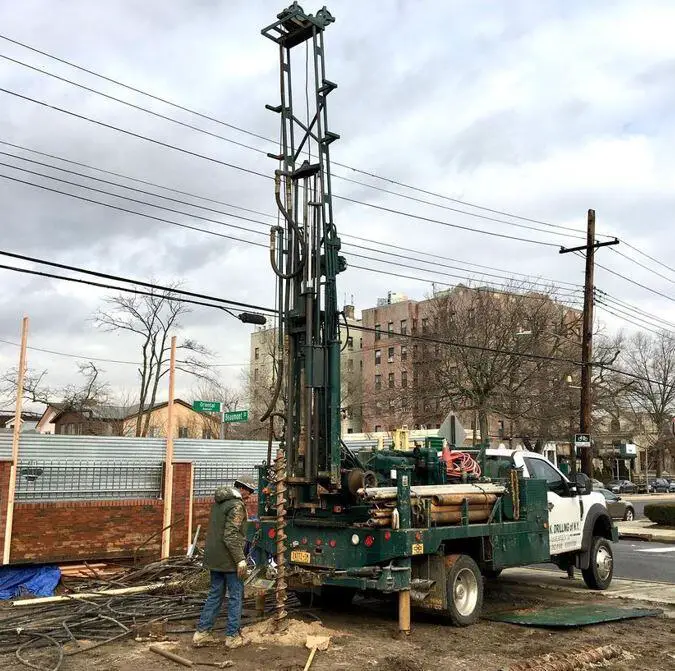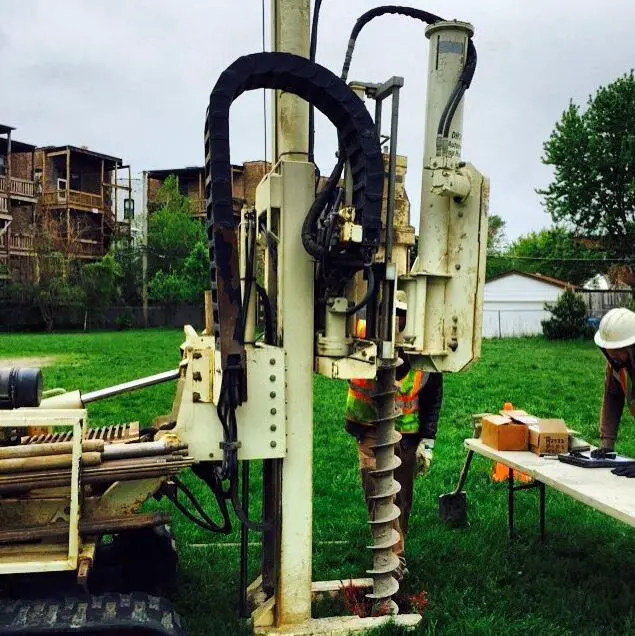The entire area of a project site cannot be fully explored for site investigation due to logistical and financial constraints. To provide enough information for the design and construction of the foundation of a building or highway, geotechnical engineering consultants must make good decisions about the location, number, and depth of borings for soil investigation. The zone of soil that will be affected by the structural loads should be covered by the number and depth of borings. There are no fixed guidelines to adhere to.
More often, the number and depths of borings are governed by experience based on the geological nature of the ground, the importance of the structure, the structural loads, and the availability of equipment. The minimum number and depth of borings may be specified by building regulations and regulatory authorities in the local area.
Whenever possible, boreholes should always be dug close to the intended foundation location. Where the bearing stratum’s depth is uneven, this is crucial. The boreholes should be precisely positioned in relation to the proposed structures, both in terms of level and location.
A grid of holes that are evenly spaced serves as an appropriate design of boreholes when the layout of the structures has not been established at the time the soil investigation is being conducted. It is feasible to use a grid of boreholes with in-situ probes of some kind, such as dynamic or static cone penetration tests, spaced more closely apart within the borehole grid for large areas. EC 7 recommends, for category 2 investigations, that the exploration points forming the grid should normally be at a mutual spacing of 20 — 40 m.
A challenging issue that is intimately related to the relative costs of the soil investigation and the project for which it is done is the necessary number of boreholes that must be sunk at any specific place. Normally, as more boreholes are drilled, more information about the soil conditions becomes available, allowing for more efficiency in the foundation design. Additionally, the likelihood of encountering unforeseen or challenging soil conditions, which would significantly raise the cost of the foundation work, decreases over time.
An economic limit, however, is reached when the cost of borings outweighs any savings in foundation cost and merely drives up the project’s overall cost. In order to determine the true dip of the strata, it is recommended that at least two and ideally three boreholes be drilled for all but the smallest structures. However, inaccurate assumptions about stratification can still be made.
However, it is very important that the number of boreholes be sufficient to detect any variances in the soil of the site. If the loads placements (such as column footing positions) on the structure’s footprint are known (which is frequently not the case), you should think about drilling at least one borehole where the heaviest load is.

The depth to which boreholes should be sunk is governed by the depth of soil affected by foundation-bearing pressures. The vertical stress on the soil at a depth of one and a half times the width of the loaded area is still one-fifth of the applied vertical stress at the foundation level, and the shear stress at this depth is still appreciable. Thus, borings in soil should always be taken to a depth of at least one to three times the width of the loaded area.
The borings are relatively shallow for narrow, widely spaced strip or pad foundations, but for big raft foundations, the borings must be deep unless rock is present within the required depth. When strip or pad footings are placed closely together, the pressure zones overlap, and the entire loaded region effectively becomes a raft foundation with correspondingly deep borings. To cover the zones of soil affected by loading transmitted through the piles in the case of piled foundations, the ground should be studied below the pile-point level.
EC 7 recommends a depth of five shaft diameters below the expected toe level. It is usual to assume that a large piled area in uniform soil behaves as a raft foundation with the equivalent raft at a depth of two-thirds of the length of the piles.
As a guide, a minimum of three boreholes should be drilled for a building area of about 250 m2 (2500 ft2) and about five for a building area of about 1000 m2 (10,000 ft2). Some guidelines on the minimum number of boreholes for buildings and for due diligence in subdivisions are given in Table 1.
| Area (m2) | Numbers of boreholes (minimum) |
| < 100 | 2 |
| 250 | 3 |
| 500 | 4 |
| 1000 | 5 |
| 2000 | 6 |
| 5000 | 7 |
| 6000 | 8 |
| 8000 | 9 |
| 10000 | 10 |
Some general guidance on the depth of boreholes is provided in the following:
- In a compressible soil such as clays, the borings should penetrate to at least between 1 and 3 times the width of the proposed foundation below the depth of embedment or until the stress increment due to the heaviest foundation load is less than 10%, whichever is greater.
- In very stiff clays and dense, coarse-grained soils, borings should penetrate 5 m to 6 m to prove that the thickness of the stratum is adequate.
- Borings should penetrate at least 3 m into the rock.
- Borings must penetrate below any fills or very soft deposits below the proposed structure.
- The minimum depth of boreholes should be 6 m unless bedrock or very dense material is encountered.
Guidelines for the Minimum Number and Depth of Borings for Common Geostructures
For foundation construction on compressible soils (clay and similar materials) with sufficient strength to initially support the structure, it is important to ensure that borings penetrate these compressible layers. Alternatively, borings should reach a depth where the additional stress placed on deeper strata is minimal, ensuring negligible consolidation that wouldn’t significantly impact the proposed structure’s settlement.
Exceptions exist for exceptionally heavy loads or situations where seepage or other factors are paramount. In such cases, borings may be terminated upon encountering bedrock or penetrating a stratum of exceptional bearing capacity and rigidity for a short distance.
However, this is only advisable if prior explorations in the vicinity or regional stratigraphic knowledge confirm that these strata possess adequate thickness or are underlain by even stronger formations. If these confirmations are lacking, a subset of the borings must be extended further to verify the thickness of the strong strata, regardless of the underlying material’s characteristics.
The recommended guidelines for the number and depth of borings for common civil engineering structures are provided below;
Shallow Foundation for Buildings
Minimum number of boreholes
1, but generally boreholes are placed at node points along grids of sizes varying from 15 x 15m to 40 x 40 m.
Minimum depth
The minimum depth of soil exploration for foundations should be 5 m or 1B to 3B, where B is the width of the foundation. Additionally, the depth of exploration should extend to a depth where the increment in stress is equal to or less than 10% of the maximum foundation pressure.
Deep (Pile) Foundation for Buildings
Minimum Number of Boreholes
1 boring, but generally boreholes are placed at node points along grids of sizes varying from 15 x 15m to 40 x 40 m
Minimum Depth of Boring
25m to 30m;
If bedrock is encountered, drill 3m into it
Bridge
Minimum number of boreholes
Abutments – 2
Piers – 2
Minimum Depth of Boring
25m to 30m;
If bedrock is encountered, drill 3m into it
Retaining Walls
Minimum Number of Boreholes
Length < 30 m: 1
Length > 30 m: 1 every 30 m, or 1 to 2 times the height of the wall
Minimum Depth of Boring
1 to 2 times the height of the wall. For walls located on bedrock, drill 3m into the bedrock
Cut Slopes
Minimum Number of Boreholes
Along the length of slope: 1 every 60 m;
if the soil does not vary significantly, 1 every 120 m
On slope: 3
Minimum Depth of Boring
6m below the bottom of the cut slope
Embankments, Including Highways
Minimum Number of Borings
1 every 60 m;
if the soil does not vary significantly, 1 every 120 m
Minimum Depth of Boring
The greater of 2 x height or 6 m











CGED is supplying diamond core bits, drill rods, casings, PDC bits, core barrels, tricone bits, DTH bits, mud pumps and other drilling tools.
I agreed when you stated that boreholes must be positioned precisely. My friend told me that their project involves well drilling. I think it’s best to work with a professional well drilling service to ensure precise work.